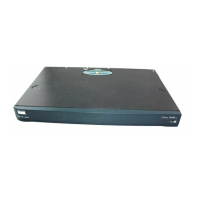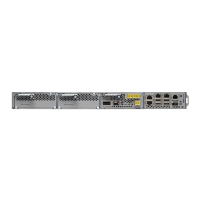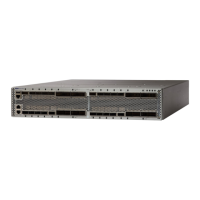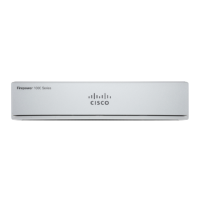About the Restore Process
The ISO image you use to restore an appliance depends on when Cisco introduced support for that appliance
model. Unless the ISO image was released with a minor version to accommodate a new appliance model, ISO
images are usually associated with major versions of the system software (for example, 6.1 or 6.2). To avoid
installing an incompatible version of the system, we recommend that you always use the most recent ISO
image available for your appliance. For your convenience, you can install system software and intrusion rule
updates as part of the restore process. Keep in mind that only management centers require rule updates.
Management Centers use an internal flash drive to boot the appliance so you can run the restore utility.
We also recommend that you always run the latest version of the system software supported by your appliance.
After you restore an appliance to the latest supported major version, you should update its system software,
intrusion rules, and Vulnerability Database (VDB). For more information, see the release notes for the update
you want to apply, as well as the Cisco Secure Firewall Management Center Administration Guide for your
version.
Before you begin restoring your appliances to factory defaults, be aware of the following recommendations
and expected behavior of the system during the restore process:
• To avoid disrupting traffic flow on your network, we recommend restoring your applinaces during a
maintenance window or at a time when the interruption has the least impact on your deployment.
• We recommend that you delete or move any backup files that reside on your appliance, and then back
up current event and configuration data to an external location.
• Restoring your appliance to factory defaults results in the loss of almost all configuration and event data
on the appliance, including the console display and LOM settings. Although the restore utility can retain
the appliance’s license and network settings, you must perform all other setup tasks after the restore
process is complete.
• To restore the management center, boot from the appliance’s internal flash drive, and use an interactive
menu to download and install the ISO image on the appliance. For your convenience, you can install
system software and intrusion rule updates as part of the restore process.
You cannot restore an appliance using its web interface.
Note
• To restore the management center, you must connect to it in one of the following ways:
• Keyboard and Monitor/KVM—You can connect a USB keyboard and VGA monitor to the appliance,
which is useful for rack-mounted appliances connected to a KVM (keyboard, video, and mouse)
switch. See the figure at Rear Panel Features, on page 1 to identify the USB and VGA ports. If
you have a KVM that is remote-accessible, you can restore appliances without having physical
access.
• Serial Connection/Laptop—You can use the RJ-45 to DP-9 console cable supplied with the appliance
(Cisco part number 72-3383-XX) to connect a computer to the appliance. Refer to the figure at Rear
Panel Features, on page 1 to identify the serial port. To interact with the appliance, use terminal
emulation software such as HyperTerminal or XModem.
• Lights-Out Management Using Serial over LAN—You can perform a limited set of actions on
management centers using LOM with an SOL connection. If you do not have physical access to an
Cisco Firepower Management Center 1600, 2600, and 4600 Getting Started Guide
50
Firepower Management Center 1600, 2600, and 4600 Getting Started Guide
About the Restore Process

